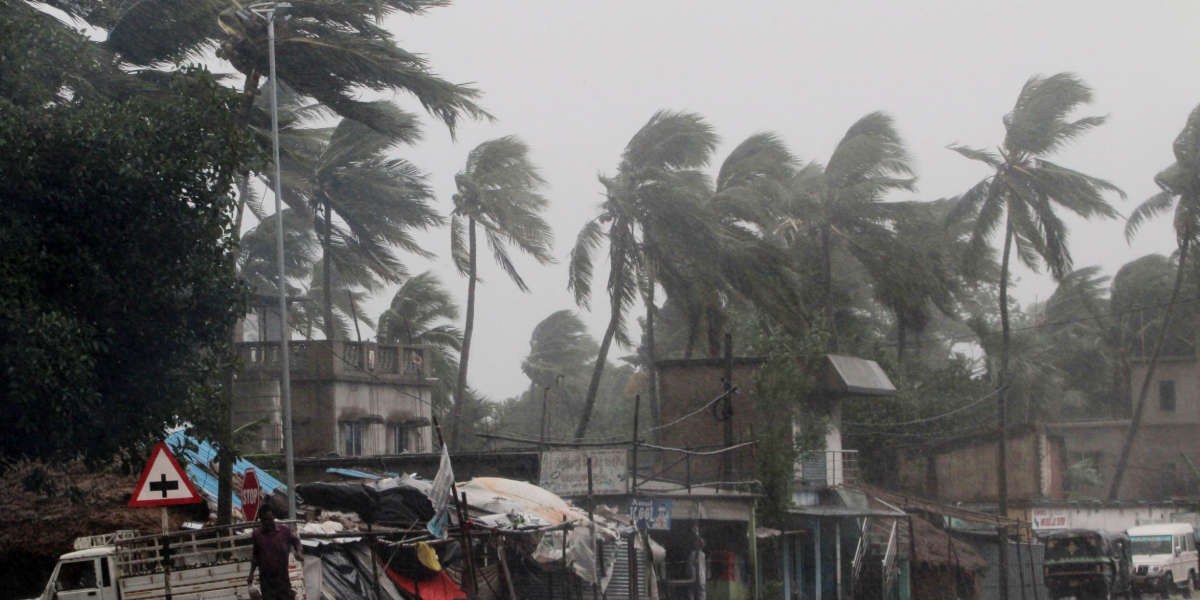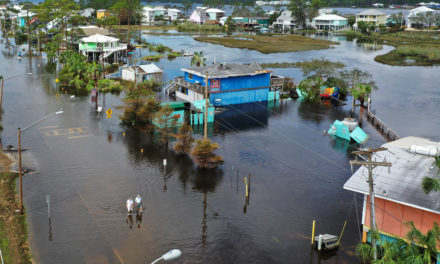Eastern India and Bangladesh are bracing themselves for super cyclone Amphan, as it heads to the Bay of Bengal, threatening millions from the two countries. Amphan is said to be the fiercest storm to be recorded in this century.
The cyclone is expected to make landfall on Wednesday evening as authorities rush to evacuate millions of people from the cyclone’s path while also following strict precautions to quell the spread of the coronavirus.
Weather forecasters have predicted winds of up to 240 km/h – equivalent to a category 4 hurricane. On Monday, the storm was the worst recorded on the Bay of Bengal and while it has since eased slightly, it is still expected to cause devastating damage.
The Indian Weather Department has also forecasted a storm surge – a rising of the sea due to winds and atmospheric pressure changes – which could rise from ten to sixteen feet, that’s roughly the same as a two-storey house. This could swamp mud dwellings, uproot communication towers and overwhelm roads and rail tracks.
Bangladeshi authorities have said that Amphan could be the most formidable storm since Cyclone Sidr in 2007 which killed around 3,500 people and claimed billions in damages. While Bangladesh and India are no strangers to cyclones, Amphan is only the second super cyclone to form in the north-eastern Indian Ocean since records began.
Efforts to relocate citizens have begun with careful consideration to practice social distancing where possible. Authorities have said that they will provide extra shelter to avoid overcrowding and make face masks mandatory with extra soap and sanitiser also available.
“We are also keeping separate isolation rooms in the shelters for any infected patients,” Bangladesh’s junior disaster management minister Enamur Rahman told AFP.
Fears have arisen over the safety of the Rohingya refugees in Bangladesh’s Cox Bazar camp. While the camp is outside of the cyclone’s path, strong rains could impact the nearly a million refugees living in the area under makeshift tents.
“Heavy rains, flooding [and] the destruction of homes and farmland will increase the likelihood of the virus spreading, particularly in densely populated areas like the refugee camps in Cox’s Bazar,” ActionAid, an international charitysaid.
The Bay of Bengal
The geography of the Bay of Bengal provides the perfect conditions for a devastating storm to occur. In fact, twenty-six of the thirty-five deadliest tropical cyclones that have ever been recorded occurred here.
According to experts, storm surges become intensified in areas that have shallow bays where water, pushed by winds, becomes concentrated as the storm moves up the bay. Add high sea surface temperatures to the mix and you have the Bay of Bengal.
In 1991, Bangladesh was hit with one of the worst cyclones on record with nearly 139,000 people killed. Eight years later, nearly 10,000 people lost their lives in Odisha, a state in eastern India.
Cyclones in the region will only continue to worsen as global warming does. With our oceans and atmosphere becoming warmer each year, experts believe that there will be more deadly weather events. Coupled with rising sea levels, the Bay of Bengal could become inhabitable for the roughly 500 million citizens that live around it.
Photo credit: The Independent
- This Artist is Making the Underwater Arena His Canvas - 28th April 2021
- A Video Game that Promotes Peace and Conflict Resolution - 15th March 2021
- Netflix’s ‘Living Undocumented’ is a Difficult Series to Watch, and Exactly Why We Should - 9th March 2021






